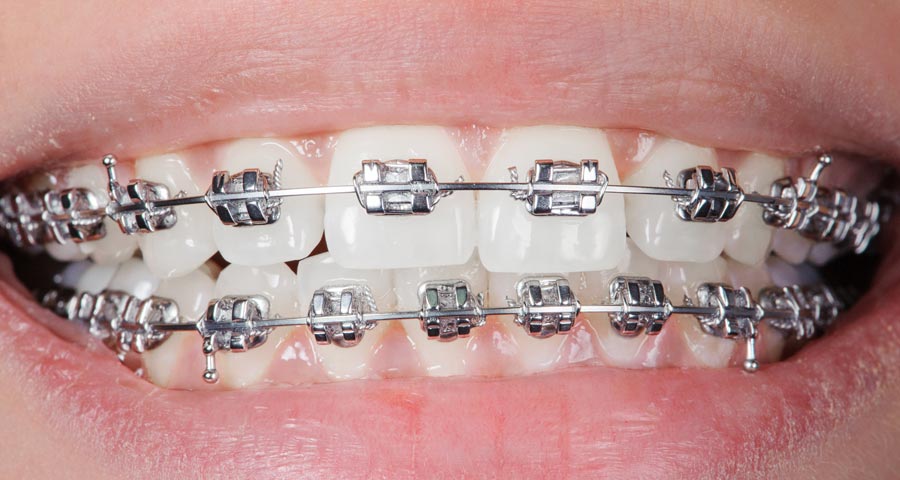
When it comes to straightening teeth, choosing the right type of braces isn’t just about appearance or speed. Maintenance plays a major role in the daily experience of orthodontic treatment. Some options require more attention than others. For patients who want to keep things as simple as possible, understanding which braces are the easiest to manage can help narrow the decision.
Every type of braces comes with its own set of responsibilities. While no option is entirely maintenance-free, some require less effort, fewer tools, and fewer adjustments.
Metal Braces Remain Reliable but Require Consistency
Traditional metal braces are still widely used because they’re strong, effective, and suitable for nearly all types of alignment issues. But from a maintenance perspective, they require steady attention.
Brackets and wires can trap food easily. Patients must brush more carefully and use floss threaders or water flossers to clean between teeth. This can add time to a person’s daily routine. It’s also important to avoid sticky or crunchy foods that can bend wires or pop off brackets.
On the plus side, metal braces don’t depend on patient discipline to work. Once they’re placed, they function around the clock. Adjustments are made during regular orthodontist visits, and patients don’t need to remember to remove or replace anything.
Ceramic Braces Offer Discreetness but Need Delicate Care
Ceramic braces work like metal braces but use clear or tooth-colored materials. Many people choose them for cosmetic reasons, especially adults or older teens.
However, they can be slightly more fragile. The brackets are more likely to chip or break if not handled gently. They’re also more prone to staining, especially if the patient drinks coffee, tea, or dark-colored beverages regularly.
In terms of daily maintenance, the cleaning process is similar to metal braces. Patients still need to clean thoroughly around brackets and between teeth. Flossing can be more difficult without special tools. The overall care effort is about the same, though extra attention to stain prevention may be needed.
Clear Aligners Simplify Cleaning but Require Discipline
Clear aligners like Invisalign have become a popular alternative to traditional braces. For many people, they are the easiest to maintain—but only if the patient is responsible about wearing them.
One of the biggest advantages is that aligners are removable. You take them out when eating, brushing, and flossing. This means you can clean your teeth just as you normally would—no need to maneuver around brackets and wires. You can also clean the aligners themselves with a soft toothbrush or soak them in cleaning crystals or retainer solution.
However, aligners must be worn for 20 to 22 hours a day. If you forget to put them back in, treatment can slow down or fail to work properly. They can also be easy to misplace. Aligners require less physical effort for cleaning, but more responsibility overall. The simplicity is there, as long as the patient follows the rules.
Lingual Braces Stay Hidden but Are Harder to Clean
Lingual braces are like traditional metal braces, except they are attached to the back of the teeth instead of the front. This makes them nearly invisible to others, which is a big plus for some patients.
Unfortunately, this position also makes them much harder to clean. Brushing and flossing require even more precision and patience than with standard braces. Speech issues are also more common at the start of treatment.
While lingual braces offer cosmetic benefits, they’re not the best choice for patients looking for an easy-care option. They demand a high level of oral hygiene to prevent plaque buildup in hard-to-see areas.
Self-Ligating Braces Reduce Some Maintenance
Self-ligating braces look similar to metal or ceramic braces, but they use a different system to hold the wire in place. Instead of elastic bands, these braces have a built-in clip that reduces friction and can make adjustments easier.
Patients with self-ligating braces often need fewer visits to the orthodontist, and the braces may trap less food than traditional ones. That said, they still require brushing and flossing around each bracket, and food restrictions still apply.
From a maintenance perspective, they are slightly easier than standard braces but not as effortless as clear aligners.
Weighing Lifestyle and Commitment
The easiest type of braces to maintain depends not only on the design but also on how willing a person is to stick to a routine. Here’s a quick summary of how the main types compare:
- Metal Braces – Reliable and sturdy, but require frequent cleaning and food caution
- Ceramic Braces – Similar to metal, with added care to avoid staining
- Clear Aligners – Simple to clean and eat with, but demand strict wear time
- Lingual Braces – Hidden from view, but the hardest to brush and floss
- Self-Ligating Braces – May offer fewer office visits and slightly easier cleaning
For patients who want the least amount of daily cleaning hassle and no food restrictions, clear aligners typically come out on top. But for those who might forget to wear them or prefer something fixed in place, self-ligating or even standard braces may still be manageable with a consistent hygiene routine.
Conclusion
Everyone’s teeth, habits, and preferences are different. The easiest braces to maintain will depend on your specific situation. A person with excellent brushing habits might do just fine with traditional braces. Another who’s always on the go might prefer the flexibility of aligners.
Before making a decision, have a detailed conversation with your orthodontist. Discuss your daily routine, eating habits, and how much time you can realistically spend on dental care. The right choice balances ease of maintenance with your orthodontic goals and personal comfort.
In the end, the most successful treatment is the one you can stick with. Choosing a type of braces that fits your lifestyle makes that a lot easier.